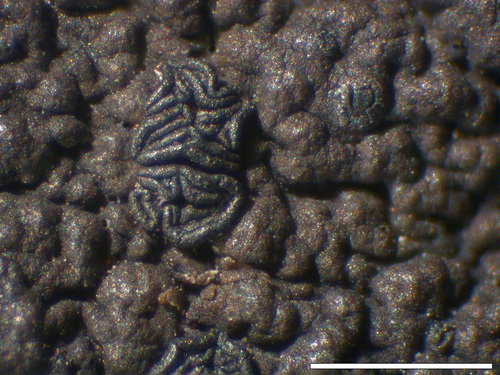Click on Characteristic name for explanation. Click on image for larger version.
|
Umbilicaria hyperborea
| Overview
| | PNW Range: | | | West side | Common
| | East side | Common
| | Immediate coast | Rare
| | Alpine or subalpine | Common
| | Habitat: | Exposed rock outcrops; west Cascades mainly at higher elevations; east Cascades common at all elevations.
| | Substrate: | Rock (noncalcareous).
| | Comments: |
| | Synonymy: | none
|
|

Upper surface
by B. McCune
1/11

Apothecia
by B. McCune
2/11

Apothecia
by B. McCune
3/11

Upper surface
by B. McCune
9/11
Scale: Bar=1mm unless noted
|
|
|
|
|